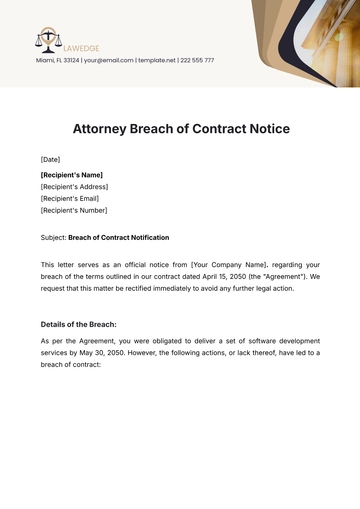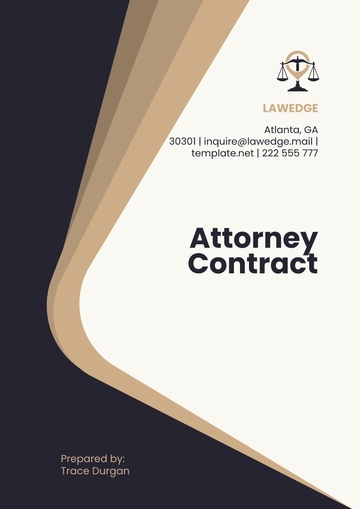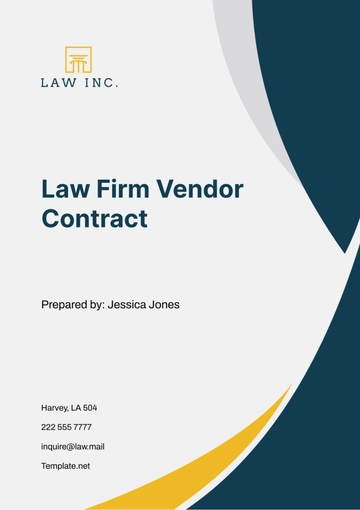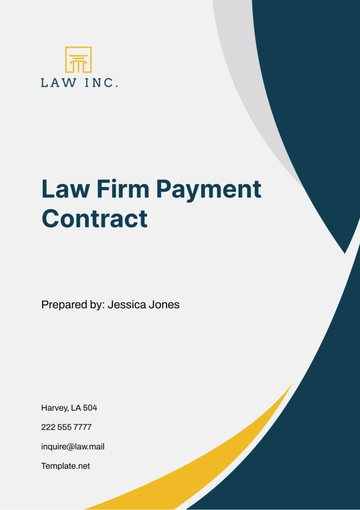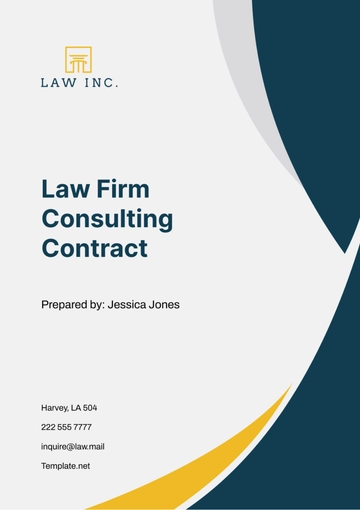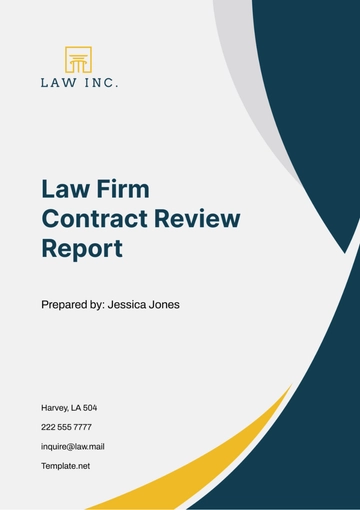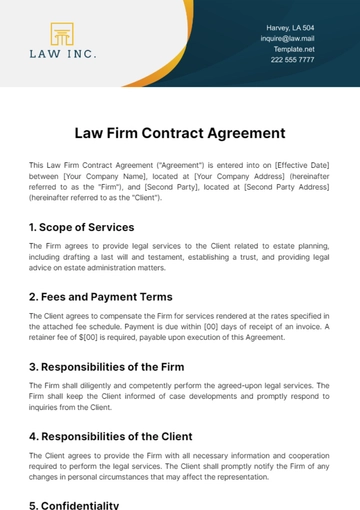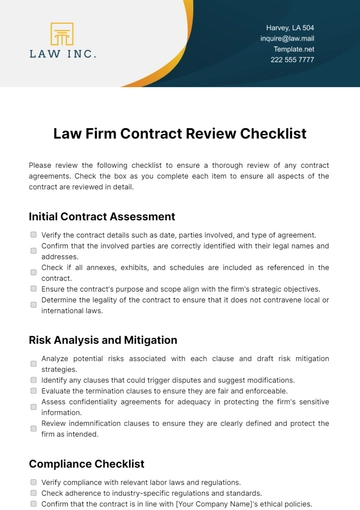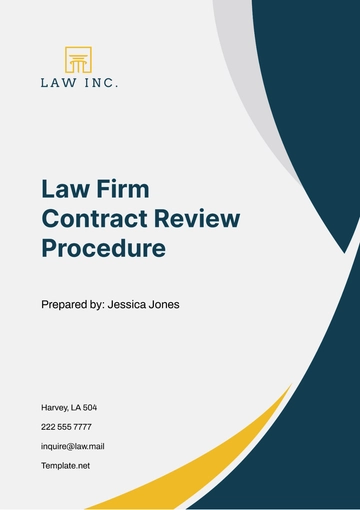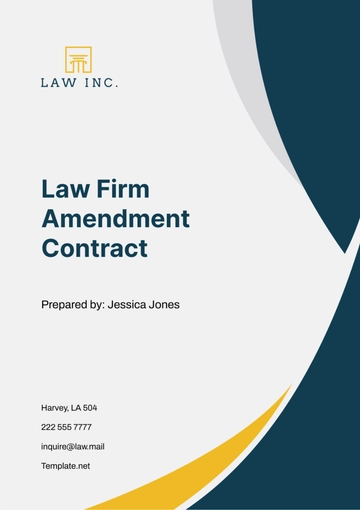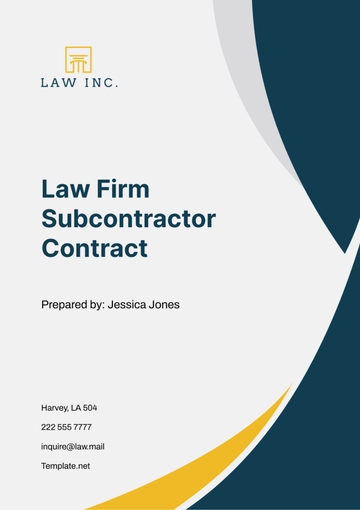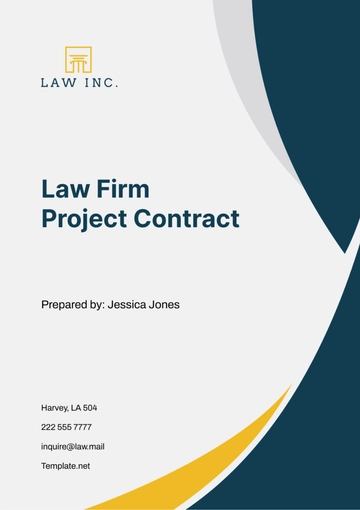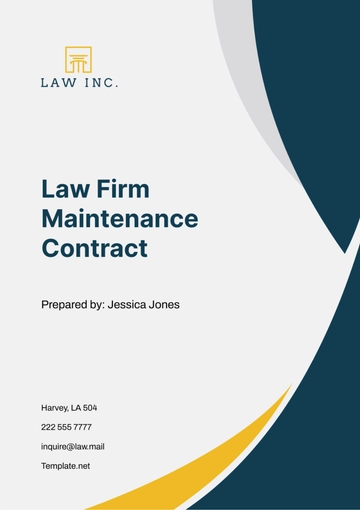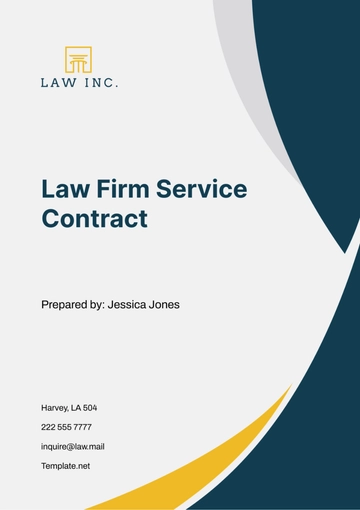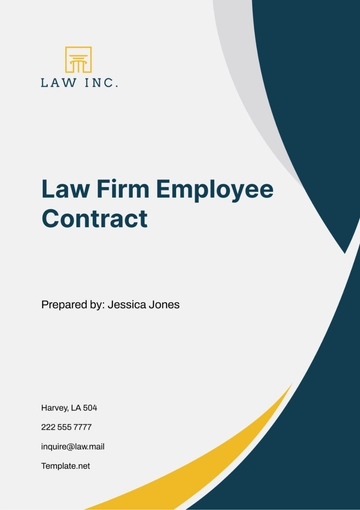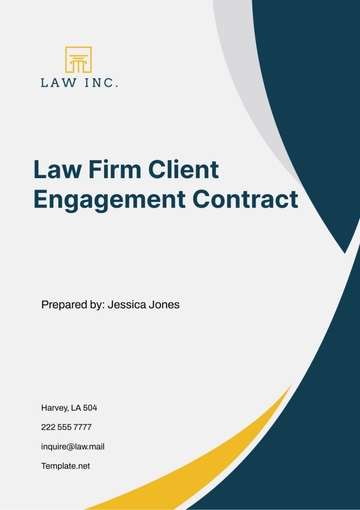Free Legal Contract Negotiation Manual
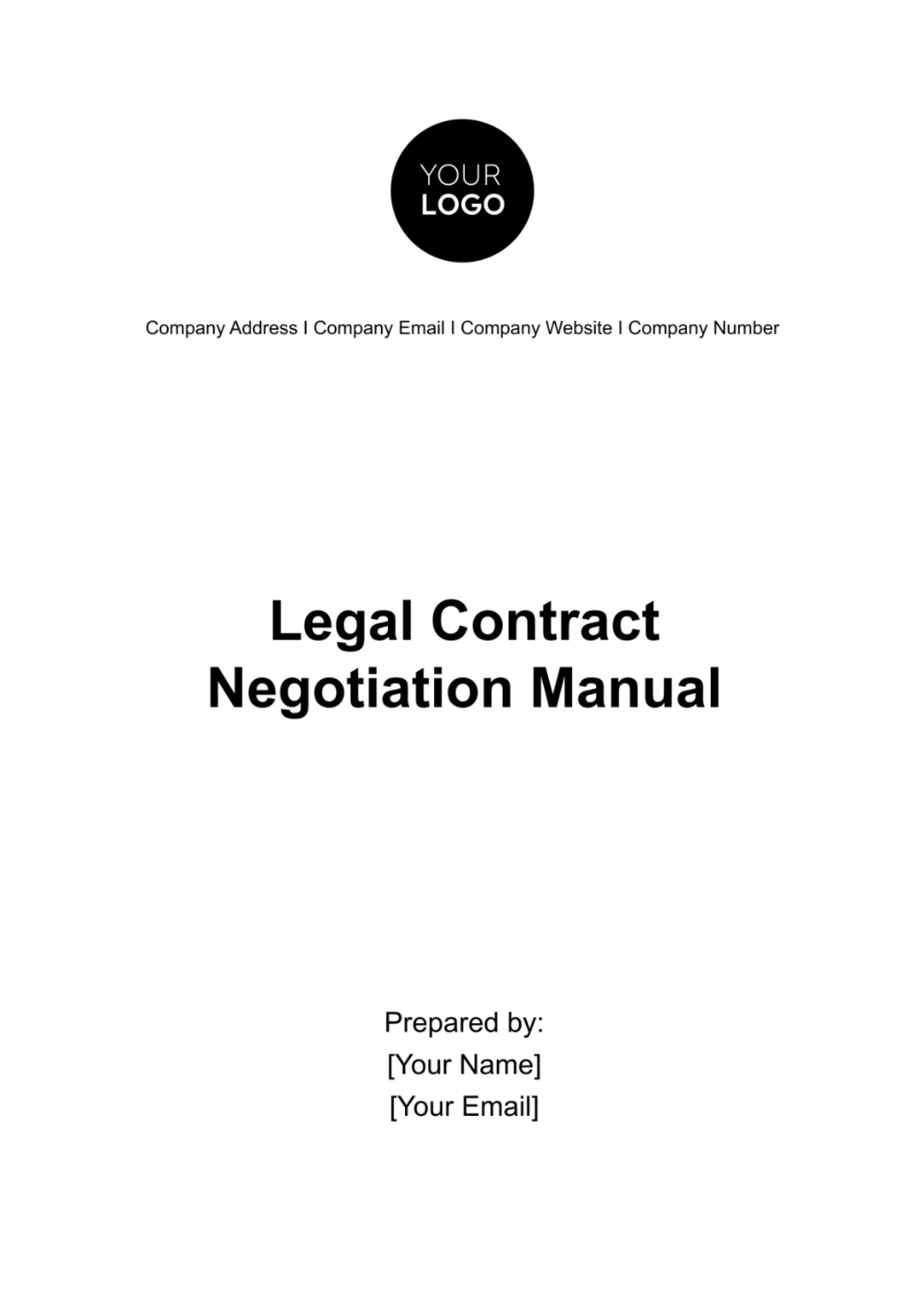
I. Introduction
Welcome to the Legal Contract Negotiation Manual. This comprehensive manual is designed to equip you with the knowledge and strategies necessary to navigate the intricacies of contract negotiation successfully. Whether you are an experienced negotiator or new to the process, this manual will serve as a valuable resource to enhance your negotiation skills and achieve favorable outcomes.
Contract negotiation is a fundamental aspect of business transactions and relationships. It involves the process of bargaining and reaching agreement between parties to define the terms and conditions of a legally binding contract. Effective negotiation is essential for protecting your interests, minimizing risks, and fostering mutually beneficial relationships with counterparties.
Throughout this manual, you will learn essential concepts, techniques, and best practices for each stage of the negotiation process, from preparation and conducting negotiations to drafting and finalizing agreements. By mastering these skills and adopting a strategic approach to negotiation, you can maximize value, mitigate risks, and achieve successful outcomes in your business dealings.
II. Understanding the Basics of Contract Negotiation
A. The Importance of Contract Negotiation
Contract negotiation plays a pivotal role in the success of business transactions and relationships. It allows parties to define their rights, obligations, and expectations in a legally binding agreement, thereby establishing clarity and certainty in their dealings. Effective negotiation enables parties to:
Define Terms: Negotiation provides an opportunity for parties to discuss and clarify the terms of the agreement, including pricing, delivery schedules, and performance expectations.
Allocate Risks: Parties can use negotiation to allocate risks and liabilities between them, thereby minimizing exposure to potential losses and disputes.
Build Relationships: Successful negotiation requires collaboration, communication, and compromise, fostering trust and cooperation between parties and laying the foundation for long-term relationships.
Achieve Objectives: By advocating for their interests and exploring creative solutions, parties can use negotiation to achieve their business objectives and maximize value.
B. Key Concepts in Contract Negotiation
Negotiation Styles: Negotiators may adopt various styles, ranging from collaborative and integrative approaches aimed at creating value for all parties to competitive and distributive approaches focused on maximizing individual gains.
BATNA (Best Alternative to a Negotiated Agreement): Understanding your BATNA allows you to assess the value of the current negotiation and determine whether it is preferable to pursue alternative options.
ZOPA (Zone of Possible Agreement): The ZOPA represents the range of possible outcomes that are acceptable to both parties, providing a framework for exploring potential agreement.
Reservation Price: The reservation price is the lowest or highest price a party is willing to accept or pay in a negotiation, serving as a threshold for reaching an agreement.
Anchoring Effect: Parties may be influenced by initial offers or proposals (anchors) made during negotiation, affecting their perception of value and subsequent bargaining positions.
III. Preparing for Negotiation
A. Setting Objectives and Priorities
Before entering into negotiations, it is crucial to establish clear objectives and priorities to guide your negotiation strategy. Consider the following steps:
Define Goals: Identify your desired outcomes and objectives for the negotiation. What are you hoping to achieve? What are your must-have versus nice-to-have objectives?
Prioritize Objectives: Rank your objectives in order of importance to determine which issues are non-negotiable and where you have flexibility.
Assess Trade-offs: Understand the potential trade-offs involved in the negotiation process. What are you willing to concede in exchange for concessions from the other party?
Develop Strategy: Based on your objectives and priorities, develop a negotiation strategy that outlines your approach, tactics, and anticipated responses to various scenarios.
B. Researching the Other Party
Gathering information about the other party involved in the negotiation is essential for understanding their interests, priorities, and negotiating style. Consider the following research methods:
Background Research: Gather information about the other party's business, industry, and market position. What are their strengths, weaknesses, opportunities, and threats (SWOT analysis)?
Identify Decision-makers: Determine who holds decision-making authority on the other side and understand their role and influence in the negotiation process.
Analyze Previous Agreements: Review any previous agreements or contracts between your organization and the other party to identify patterns, preferences, and potential areas of contention.
Understand Cultural Factors: If negotiating with parties from different cultural backgrounds, be mindful of cultural norms, communication styles, and expectations that may impact the negotiation dynamics.
C. Identifying Potential Risks and Mitigation Strategies
Identifying potential risks and developing mitigation strategies is crucial for managing uncertainties and protecting your interests during negotiations. Consider the following risk assessment and mitigation techniques:
Risk Assessment: Identify potential risks, uncertainties, and vulnerabilities that may arise during the negotiation process. These may include legal, financial, operational, or reputational risks.
Risk Prioritization: Prioritize risks based on their likelihood and potential impact on your organization's objectives. Focus on addressing high-priority risks that pose the greatest threat to achieving a successful outcome.
Mitigation Strategies: Develop proactive mitigation strategies to address identified risks and minimize their impact on the negotiation process. This may involve contingency planning, risk transfer mechanisms, or preemptive measures to prevent or mitigate potential issues.
Monitor and Adapt: Continuously monitor and assess the negotiation environment for changing circumstances, new risks, or emerging issues. Be prepared to adapt your negotiation strategy and mitigation efforts accordingly to effectively manage risks throughout the process.
IV. Conducting the Negotiation
A. Establishing Rapport and Building Relationships
Building rapport and establishing trust with the other party is essential for creating a positive negotiation environment and fostering open communication. Consider the following strategies:
Active Listening: Demonstrate genuine interest and attention to the other party's concerns, perspectives, and priorities through active listening and empathy.
Find Common Ground: Identify shared interests, goals, or values that can serve as a basis for collaboration and mutual benefit.
Communicate Respectfully: Maintain a professional and respectful demeanor throughout the negotiation process, even in the face of disagreement or conflict.
Build Long-term Relationships: Focus on building long-term, mutually beneficial relationships with the other party, rather than solely focusing on short-term gains.
B. Communicating Effectively During Negotiations
Effective communication is essential for conveying your interests, advocating for your positions, and reaching agreement with the other party. Consider the following communication strategies:
Clarity and Precision: Clearly articulate your proposals, offers, and requests using precise language and terminology to avoid ambiguity or misunderstanding.
Transparency: Be transparent and forthcoming about relevant information, data, and rationale supporting your positions and proposals.
Assertiveness: Advocate for your interests and objectives assertively, while also being open to listening to the other party's perspectives and concerns.
Manage Emotions: Keep emotions in check during negotiations and focus on maintaining a constructive and productive dialogue, even in challenging or contentious situations.
C. Handling Difficult Situations and Conflict Resolution
Negotiations may encounter challenges, conflicts, or impasses that require effective resolution strategies. Consider the following approaches for handling difficult situations:
Problem-solving: Adopt a problem-solving approach to address issues and obstacles collaboratively with the other party. Focus on identifying mutually acceptable solutions that meet the interests and needs of both sides.
De-escalation: If tensions rise or conflicts emerge during negotiations, focus on de-escalating the situation through active listening, empathy, and constructive dialogue.
Mediation: Consider involving a neutral third party mediator to facilitate communication, assist in generating creative solutions, and help parties reach agreement.
Escalation: As a last resort, be prepared to escalate unresolved issues or disputes to higher-level decision-makers or alternative dispute resolution mechanisms, such as arbitration or litigation, if necessary.
V. Drafting and Reviewing Contracts
A. Understanding Contract Language and Structure
Contracts are legal documents that outline the rights, obligations, and responsibilities of parties involved in a transaction or relationship. Understanding the language and structure of contracts is crucial for drafting clear, comprehensive, and enforceable agreements. Key considerations include:
Legal Terminology: Contracts often contain specialized legal terminology that conveys specific meanings and implications. It is essential to understand the precise meaning of terms used in the contract and their legal implications.
Structure: Contracts typically follow a standardized structure, including introductory clauses, definitions, substantive provisions, and concluding clauses. Each section serves a distinct purpose and contributes to the overall clarity and coherence of the agreement.
Formatting Conventions: Contracts may include formatting conventions such as headings, numbering, and paragraph organization to enhance readability and facilitate reference. Consistent formatting helps parties locate relevant provisions and navigate the contract efficiently.
B. Key Clauses and Provisions
Certain clauses and provisions are commonly included in contracts to address specific issues, allocate risks, and protect the interests of parties. Examples of key clauses and provisions include:
Indemnification: Indemnification clauses specify the extent to which one party agrees to indemnify, or compensate, the other party for losses, damages, or liabilities arising from specified events or circumstances.
Confidentiality: Confidentiality clauses establish obligations regarding the protection and handling of confidential information exchanged between parties during the course of the agreement. They typically define the scope of confidential information, permissible uses, and exceptions to confidentiality obligations.
Dispute Resolution: Dispute resolution clauses outline procedures for resolving disputes that may arise under the contract, including negotiation, mediation, arbitration, or litigation. These clauses help parties avoid costly and time-consuming litigation by providing alternative methods for resolving conflicts.
Force Majeure: Force majeure clauses excuse parties from performing their contractual obligations in the event of unforeseen circumstances or events beyond their control, such as natural disasters, war, or government actions. These clauses specify the conditions under which performance may be suspended or terminated and allocate risks associated with such events.
C. Tips for Drafting Clear and Enforceable Contracts
Drafting clear and enforceable contracts requires attention to detail, precision, and clarity of expression. Key tips for drafting effective contracts include:
Use Plain Language: Contracts should be written in clear, straightforward language that is easily understandable to parties without legal expertise. Avoid unnecessary jargon, archaic language, and complex sentence structures that may obscure meaning.
Specify Rights and Obligations: Clearly define the rights, obligations, and responsibilities of each party in the contract, including performance standards, delivery schedules, payment terms, and dispute resolution procedures. Ambiguity and uncertainty should be minimized to prevent future disputes.
Include Definitions: Define key terms and concepts used in the contract to ensure common understanding and interpretation by all parties. Definitions should be clear, precise, and tailored to the context of the agreement.
Address Contingencies: Anticipate potential contingencies, risks, and events that may affect performance under the contract, and include appropriate provisions to address these scenarios. Contingency planning helps parties mitigate risks and adapt to changing circumstances during the term of the agreement.
By following these guidelines and best practices, parties can draft contracts that accurately reflect their intentions, protect their interests, and facilitate successful business relationships.
VI. Finalizing the Agreement
A. Reviewing and Finalizing the Contract
Once the contract has been drafted, it is essential to conduct a thorough review to ensure accuracy, completeness, and compliance with legal requirements. Key steps in the review process include:
Legal Review: Seek input from legal counsel or contract specialists to review the contract for legal validity, enforceability, and compliance with applicable laws and regulations. Legal experts can identify potential risks, inconsistencies, or ambiguities that may require clarification or revision.
Technical Review: Conduct a technical review of the contract to verify the accuracy of technical specifications, performance standards, and other technical details. Ensure that all technical requirements are clearly defined and achievable within the scope of the agreement.
Stakeholder Review: Share the draft contract with relevant stakeholders, including internal departments, external partners, and key decision-makers, for feedback and input. Incorporate any feedback or suggested revisions to address concerns and ensure alignment with stakeholder interests.
Finalization: Once all necessary revisions have been made, finalize the contract by preparing the final version for execution. Ensure that all parties have reviewed and approved the final contract before proceeding to execution.
B. Obtaining Signatures and Executing the Agreement
Execution of the contract involves obtaining signatures from all parties to indicate their agreement and willingness to be bound by the terms of the contract. Key steps in the execution process include:
Signature Authority: Verify that signatories have the authority to bind their respective organizations to the terms of the contract. Obtain authorization or approval from appropriate decision-makers or stakeholders as necessary.
Signature Process: Coordinate the signing process to ensure timely execution of the contract. Depending on the preferences of the parties involved, signatures may be obtained manually, electronically, or through other approved methods.
Document Retention: Maintain accurate records of executed contracts, including signed copies, correspondence, and supporting documentation. Establish a centralized repository or document management system to securely store and manage contract records for future reference and compliance purposes.
Once the contract has been properly executed and all parties have received signed copies, it becomes legally binding and enforceable according to its terms. Effective execution of the agreement marks the successful conclusion of the negotiation process and sets the stage for implementation and performance under the contract.
VII. Post-Negotiation Considerations
A. Monitoring and Managing Contract Performance
After the agreement has been reached, it is essential to monitor and manage contract performance to ensure compliance with the terms and conditions of the contract. Consider the following steps:
Establish Monitoring Mechanisms: Implement systems and processes to track key performance indicators (KPIs), milestones, and deliverables outlined in the contract.
Regular Reviews: Conduct regular reviews and assessments of contract performance to identify any deviations, issues, or areas for improvement.
Address Non-Compliance: Take prompt action to address any instances of non-compliance or breaches of contract, including notifying the other party, implementing corrective measures, and seeking remedies as appropriate.
Maintain Communication: Maintain open and transparent communication with the other party throughout the contract term to address any concerns, provide updates on progress, and ensure alignment on expectations.
Document Performance: Maintain accurate records and documentation of contract performance, including correspondence, reports, and deliverables, to support compliance monitoring and dispute resolution efforts.
B. Addressing Disputes and Amendments
Despite careful negotiation and planning, disputes or unforeseen circumstances may arise during the course of the contract term. It is essential to have mechanisms in place to address disputes and make amendments as necessary. Consider the following strategies:
Dispute Resolution Mechanisms: Refer to the dispute resolution clause in the contract to determine the agreed-upon process for resolving disputes. This may include negotiation, mediation, arbitration, or litigation, depending on the preferences of the parties.
Collaborative Resolution: Endeavor to resolve disputes collaboratively and amicably through constructive dialogue and negotiation. Focus on identifying mutually acceptable solutions that preserve the interests and relationship between the parties.
Amendment Procedures: Follow the procedures outlined in the contract for making amendments or modifications to the agreement. This may involve obtaining mutual consent from all parties, documenting changes in writing, and updating the contract accordingly.
Mediation or Arbitration: If disputes cannot be resolved through negotiation, consider engaging a neutral third-party mediator or arbitrator to facilitate resolution. Mediation and arbitration offer alternative dispute resolution methods that can help parties avoid costly and time-consuming litigation.
Legal Recourse: As a last resort, parties may pursue legal recourse through the courts to enforce their rights under the contract or seek damages for breaches of contract. Legal action should be considered carefully and used judiciously to preserve business relationships and minimize disruption.
By proactively managing contract performance, addressing disputes promptly, and making necessary amendments as circumstances change, parties can protect their interests, maintain trust and cooperation, and preserve the integrity of their business relationships.
VIII. Conclusion
Effective contract negotiation is a critical skill for achieving successful outcomes in business transactions and relationships. By following the guidance provided in this manual and adopting a strategic approach to negotiation, parties can maximize value, minimize risks, and build mutually beneficial partnerships. Remember to prepare thoroughly, communicate effectively, and maintain diligence in monitoring contract performance to ensure the long-term success of your agreements. With dedication, skill, and perseverance, you can navigate the negotiation process with confidence and achieve your business objectives.
- 100% Customizable, free editor
- Access 1 Million+ Templates, photo’s & graphics
- Download or share as a template
- Click and replace photos, graphics, text, backgrounds
- Resize, crop, AI write & more
- Access advanced editor
Enhance your negotiation prowess with the Legal Contract Negotiation Manual Template available on Template.net. This comprehensive guide equips legal professionals with proven strategies and tactics for successful contract negotiations. Fully editable and customizable, adapt it to your organization's specific requirements. Utilize our Ai Editor Tool for effortless customization. Elevate your negotiation game and achieve favorable outcomes with this invaluable resource.
You may also like
- Rental Contract
- Contractor Contract
- Contract Agreement
- One Page Contract
- School Contract
- Social Media Contract
- Service Contract
- Business Contract
- Restaurant Contract
- Marketing Contract
- Real Estate Contract
- IT Contract
- Cleaning Contract
- Property Contract
- Supplier Contract
- Partnership Contract
- Food Business Contract
- Construction Contract
- Employment Contract
- Investment Contract
- Project Contract
- Payment Contract
- Student Contract
- Travel Agency Contract
- Startup Contract
- Annual Maintenance Contract
- Employee Contract
- Gym Contract
- Event Planning Contract
- Personal Contract
- Nursing Home Contract
- Law Firm Contract
- Work from Home Contract
- Software Development Contract
- Maintenance Contract
- Music Contract
- Amendment Contract
- Band Contract
- DJ Contract
- University Contract
- Salon Contract
- Renovation Contract
- Photography Contract
- Lawn Care Contract
